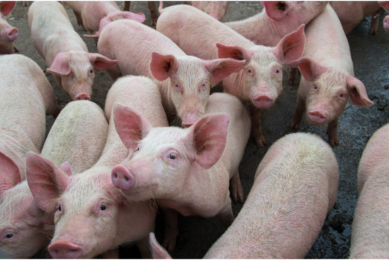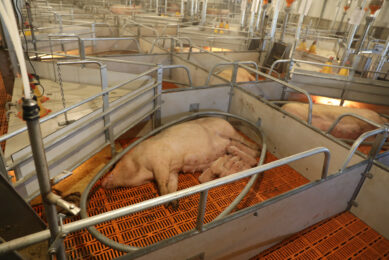Australia: Research on reducing PWD in piglets
Australia’s Pork Cooperative Research Centre (CRC) has found a positive link between feeding encapsulated Zinc oxide and reducing post-weaning diarrhoea (PWD) in piglets.
The results showed the encapsulated product enabled the effective level of Zinc oxide to be reduced 30 fold, offering substantial environmental advantages to Australian pork producers.
©
To minimise post-weaning growth lag and potential effects of enterotoxigenic E. coli (ETEC), weaner piglets are often treated with high concentrations (3kg/tonne) of Zinc oxide.
©
Using pharmaceutical levels of Zinc oxide in weaner pig diets is widely accepted as a control measure, due to its proven effects on performance and PWD and its cost-effectiveness, compared to other feed additives and dietary strategies.
©
Long-term solultion
However, this option is not a viable long-term solution to the problem of PWD, according to Pork CRC supported researcher Dr Jae Kim of the Department of Agriculture and Food Western Australia (DAFWA).
©
“There’s concern at the possible toxic effect on the environment of faeces containing high Zinc concentrations,” he said.
©
The final report of Pork CRC Project 2C-114, prepared by Dr Kim, DAFWA colleague Dr Bruce Mullan and Dr Christian Hansen and Professor John Pluske, both of Murdoch University, states that PWD is a major problem in commercial piggeries and is associated with increased morbidity and mortality and high treatment costs.
©
Gut health of weaned piglets is known to be influenced by many factors, including nutritional, physiological and psychological stressors, immune functions, hygienic conditions, intestinal barrier functions and diet composition.
©
Importantly, growth check associated with PWD decreases lifetime pig performance.
©
Despite numerous dietary and management strategies introduced and implemented by research groups around the world, poor gut health of pigs after weaning is still a concern as it compromises their potential growth.
©
Some studies have reported no benefit from feeding Zinc oxide, whereas others concluded that while it was an effective treatment for PWD there were no definite answers as to how excess dietary Zinc oxide exerted its effects.
©
Dr Kim said that despite ambiguity around the exact mode of action of Zinc oxide, it was likely it would continue to be used and studied because it was a cost-effective nutritional tool.
©
“However, the high level of Zinc excreted in the faeces is an environmental concern
and in Europe high levels of Zinc oxide can now only be used under veterinary
prescription. It’s possible a similar ruling may apply in Australia at some stage.”
©
Recently, a microencapsulated, lipid-coated Zinc oxide product was released on the market with claims it dramatically decreases inclusion of Zinc oxide (from 2500-3000 ppm to 100 ppm) to achieve the same effect on PWD.
©
Research
Studies by Pork CRC researchers showed inclusion of 100 ppm microencapsulated Zinc oxide suppressed the expression of PWD in ETEC challenged and non-challenged pigs and kept the plasma and faecal Zinc levels to levels found in pigs fed a control diet without supplemental Zinc oxide.
©
Results from the Pork CRC research suggest expression of PWD can be reduced by supplementing 100 ppm microencapsulated Zinc oxide in the diets for weaner pigs, without compromising faecal Zinc excretion levels.
©
“Therefore, the microencapsulated Zinc oxide was evaluated as a solution for the environmental issue as well as controlling PWD,” Dr Kim said.
©
A large-scale commercial validation study is still required to confirm the current findings, however, if confirmed, these findings could prove to be of significant use and benefit to commercial piggeries across Australia.
©











